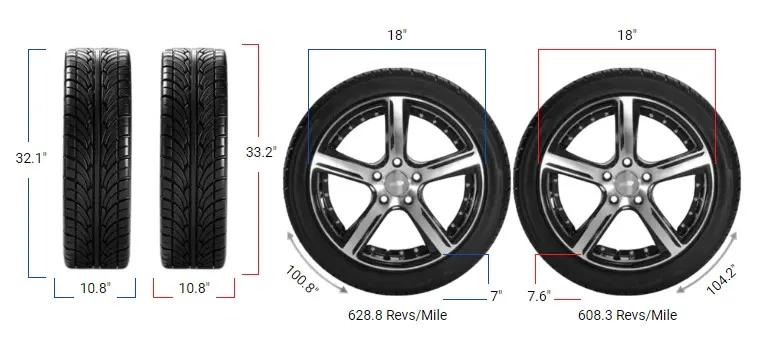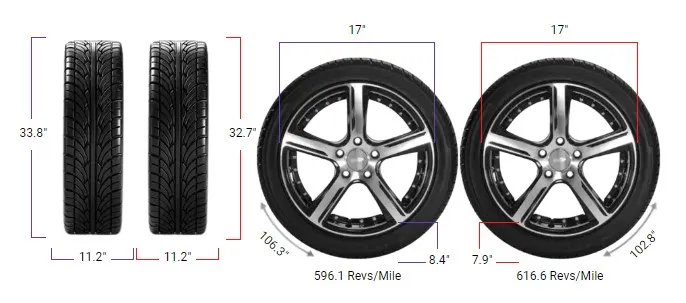Tire Size 225/45r18 vs 245/40r18
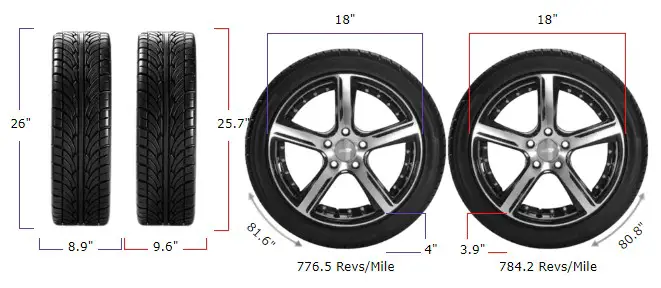
Thinking about upgrading your ride with a new set of shoes? Going from 225/45R18 to 245/40R18 tires can give your car a fresh look and enhanced performance. Let’s dive in and explore the nuances of this tire size shift.
- Wider tires provide improved traction and handling
- Larger contact patch may slightly reduce fuel efficiency
- Shorter sidewalls result in a firmer ride, especially on rough roads
- Minor speedometer discrepancy of around 0.2 mph at 20 mph
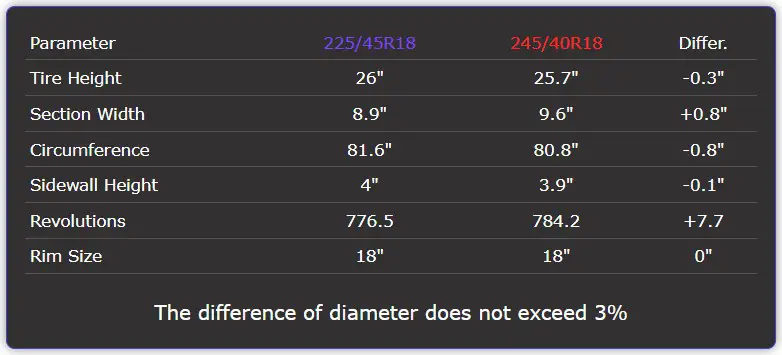
Fitment Guide
In this case, the diameter difference between 225/45R18 and 245/40R18 is approximately -1%, falling within the acceptable range.
However, the wider 245/40R18 tires may necessitate minor adaptations to prevent rubbing or clearance issues.
On-Road Impact
Switching to 245/40R18 tires can significantly influence your on-road driving experience. Here’s what you can expect:

- Ground Clearance: The slightly smaller diameter of 245/40R18 tires may minimally reduce ground clearance, but the impact is generally negligible for most drivers.
- Gas Mileage: The wider 245/40R18 tires have a larger contact patch, potentially increasing rolling resistance and slightly reducing fuel efficiency. However, the difference is usually minimal and may be offset by other factors like driving habits and tire pressure.
- Ride Comfort: The lower sidewall height of 245/40R18 tires can result in a firmer ride, as they have less cushioning than the taller 225/45R18 sidewalls. This may be more noticeable on rough or uneven surfaces.
- Speedometer Accuracy: The 1% difference in revolutions per mile between the two tire sizes can cause a minor speedometer discrepancy. At 20 mph, the actual speed would be around 19.8 mph with 245/40R18 tires. While not a major concern, it’s something to keep in mind.
Off-Road Impact
If you occasionally venture off the beaten path, here’s how 245/40R18 tires compare to 225/45R18:
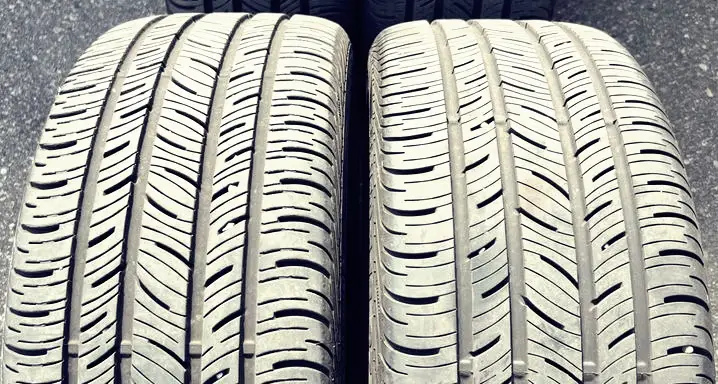
- Traction: The wider 245/40R18 tires provide a larger contact area with the ground, potentially improving traction on loose or slippery surfaces like sand or mud.
- Durability: The shorter sidewalls of 245/40R18 tires offer less flexibility and may be more susceptible to damage from rocks or debris when off-roading. However, the wider tread can help disperse impacts more effectively.
What is the Main Difference Between 225/45R18 and 245/40R18?
The primary distinction lies in the tire width, with 245/40R18 tires being 0.79 inches (20 mm) wider than 225/45R18 tires. This difference in width affects various aspects of vehicle performance and handling.
225/45r18 vs 245/40r18
| Feature | 225/45R18 | 245/40R18 | Difference |
|---|---|---|---|
| Diameter inches (mm) | 25.97 (659.7) | 25.72 (653.2) | -0.26 (-6.5) -1% |
| Width inches (mm) | 8.86 (225) | 9.65 (245) | 0.79 (20) +8.9% |
| Circumference inches (mm) | 81.59 (2072.51) | 80.79 (2052.09) | -0.8 (-20.42) -1% |
| Sidewall Height inches (mm) | 3.99 (101.25) | 3.86 (98) | -0.13 (-3.25) -3.2% |
| Revolutions per mile (km) | 776.52 (482.51) | 784.25 (487.31) | 7.73 (4.8) +1% |
| Speedo Reading | 20 mph (32.19 km/h) | 19.8 mph (31.87 km/h) | -0.2 mph |
Can I Use 245/40R18 Instead of 225/45R18?
Yes, you can use 245/40R18 tires instead of 225/45R18, as the difference in overall diameter is within the acceptable ±3% range. However, the wider tires may require minor modifications to prevent rubbing or clearance issues.
How Much Taller Is a 225/45R18 Tire Than a 245/40R18?
A 225/45R18 tire is approximately 0.26 inches (6.5 mm) taller than a 245/40R18 tire. This difference in height is relatively small and falls within the recommended guidelines for tire replacement.
How Much Wider is a 245/40R18 Tire Than a 225/45R18?
A 245/40R18 tire is 0.79 inches (20 mm) wider than a 225/45R18 tire. This increased width provides a larger contact patch with the road surface, potentially enhancing traction and handling characteristics.
Our Observation
After analyzing the differences between 225/45R18 and 245/40R18 tires, we’ve found that the impact of switching is relatively minor for most drivers. The 1% difference in overall diameter falls within the acceptable range, and the effects on ground clearance, gas mileage, and speedometer accuracy are minimal.
The wider 245/40R18 tires offer improved traction and a sportier appearance, but the trade-off is a slightly firmer ride due to the shorter sidewalls. For off-road enthusiasts, the wider tires can provide better grip, but the reduced sidewall height may increase the risk of damage on rough terrain.
Ultimately, the decision to switch from 225/45R18 to 245/40R18 tires depends on your personal preferences and driving needs. If you prioritize a sportier look and enhanced performance, the wider tires may be worth considering. However, if ride comfort is your top priority, sticking with the original 225/45R18 size might be the better choice.


